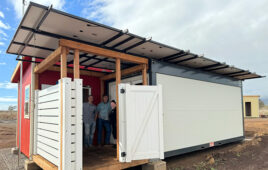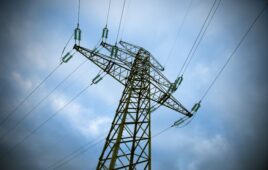A shift toward utility-scale battery storage systems is gaining momentum nationally, finds a report published by the Institute for Energy Economics and Financial Analysis (IEEFA).
 The report — Advances in Electricity Storage Suggest Rapid Disruption of U.S. Electricity Sector — details upstart storage and storage-expansion projects in Arizona, California, Hawaii, Florida, Massachusetts, New Hampshire, Nevada, Texas and Vermont.
The report — Advances in Electricity Storage Suggest Rapid Disruption of U.S. Electricity Sector — details upstart storage and storage-expansion projects in Arizona, California, Hawaii, Florida, Massachusetts, New Hampshire, Nevada, Texas and Vermont.
Dennis Wamsted, an IEEFA editor/analyst and lead author of the report, said recent evidence of utility-scale storage adoption is most likely the beginning of a trend that will take hold broadly across the industry, benefitting renewables at the expense of gas- and coal-fired plants.
In combination with solar, battery storage can be used to facilitate closure of coal and natural gas plants currently being used largely for peaking or seasonal needs, as shown by the NV Energy decision to close the North Valmy coal plant in Nevada, and by FPL’s plan to shut two aging natural gas units in Florida.
“Bigger changes loom,” Wamsted said. “In the many examples we researched, each project, by and large, was driven by one of several value streams—cutting transmission charges, providing grid resilience, offering peak power, allowing for early plant closures and the like — even if other benefits were accrued too.”
The report details dozens of examples of electric companies large and small finding an assortment of cost savings in electricity-storage technology and portability.
With storage, more residential solar systems can be installed on local distribution lines without requiring potentially costly and time-consuming system upgrades, as can be seen in an existing program in Vermont and in one being proposed in New Hampshire.
It is used to improve the economics of existing utility-scale solar generation, as noted in the report’s discussion about Vistra’s battery storage retrofit at a Texas PV plant.
“Installation is still tiny in terms of absolute numbers, but power storage is now ubiquitous and energy storage is no longer a pie-in-the sky proposition,” Wamsted said. “These changes are taking place today.”
News item from IEEFA





Tell Us What You Think!